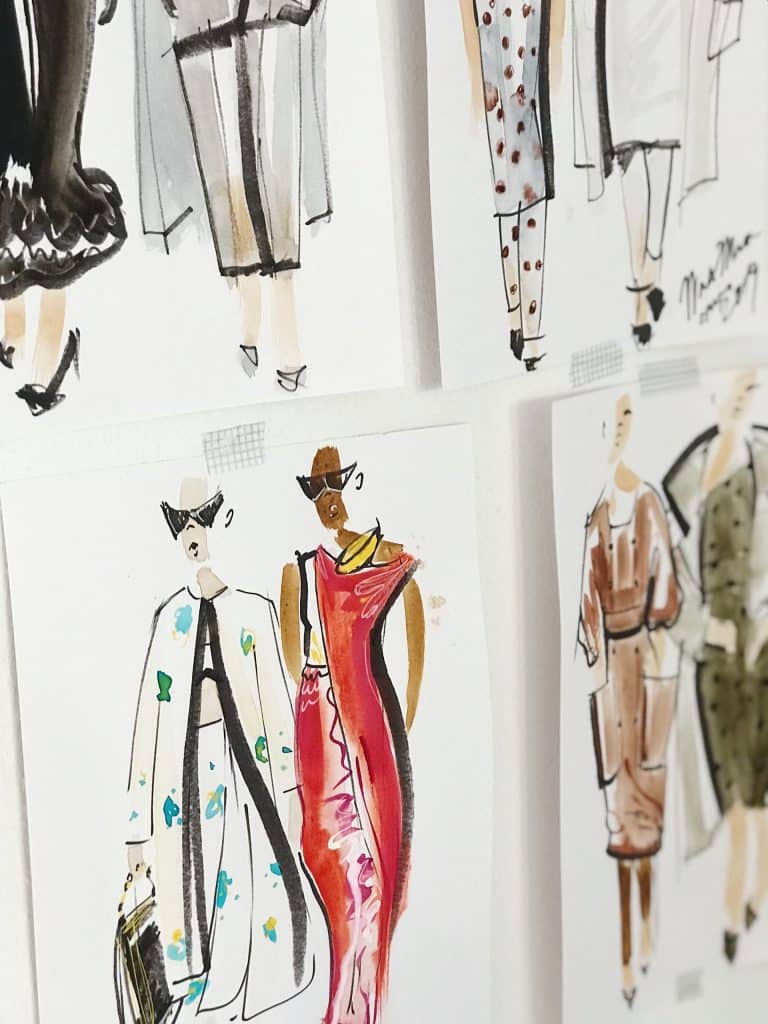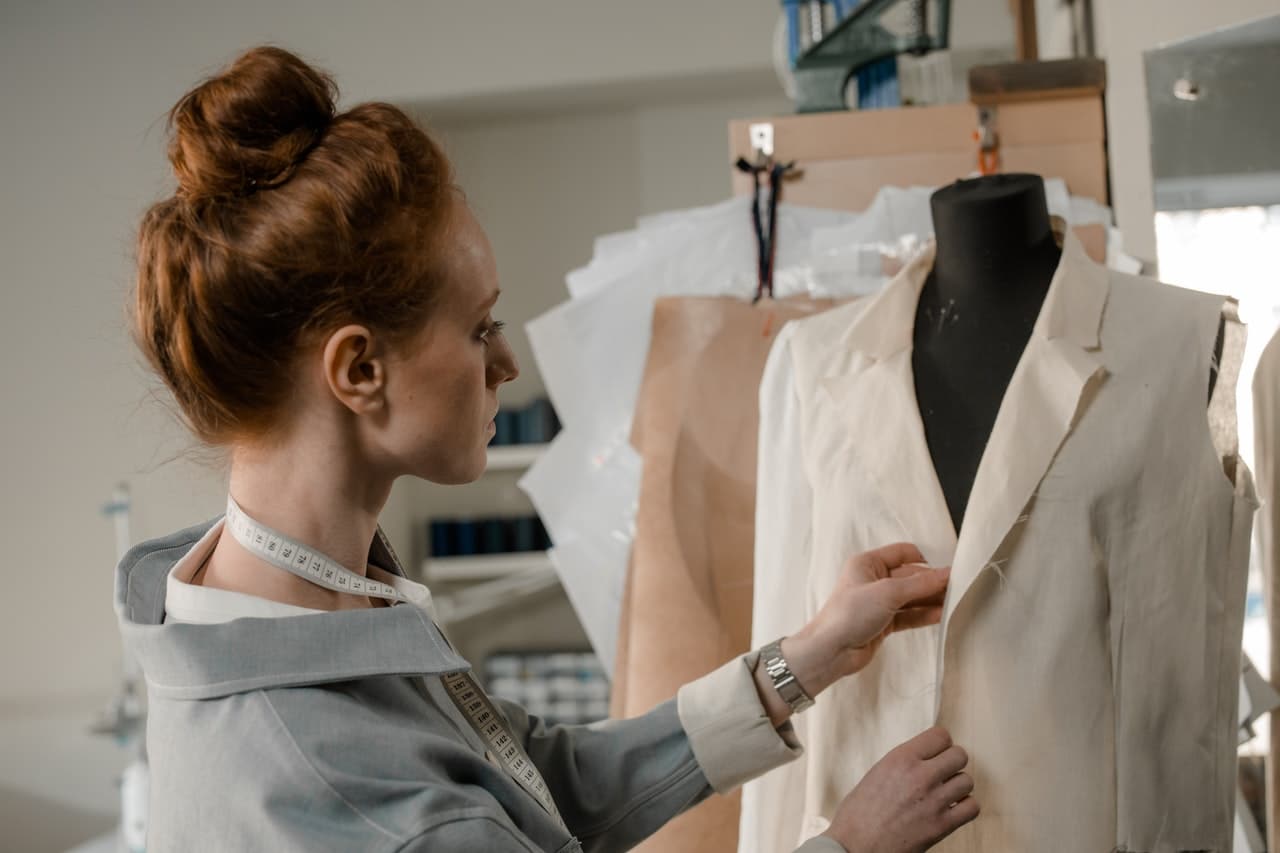While the fashion design process may be similar across different types of fashion design, from conceptualizing and sketching through to constructing and marketing, there are many different niches within fashion design that you can explore.
Haute couture, French for “high dressmaking”, is the pinnacle of high end garment making. To qualify as haute couture, the garments must be limited in number and custom fitted for the client. These handmade garments are typically painstaking to create and are truly one-of-a-kind.
While the term may be used more casually, haute couture actually has a pretty strict definition. True haute couture has to be designated as such by the French government, and the designers must have a studio or atelier in Paris employing at least 15 people, along with guidelines about how many looks they must release each year.
Luxury fashion, while still exclusive, is a little bit more accessible than haute couture. It lies somewhere between the ultra-exclusive and rare designs worn only by the rich and famous, and the more mass produced garments that are available to everybody.
Luxury designers create garments that are made with high quality materials and are usually considered to be of higher-than-average quality. While they are not one-off pieces like haute couture garments are, they are also not produced on the same scale as the everyday clothes we are used to.
Luxury fashion is too expensive for the average consumer, but there is an ever-growing market for it thanks to newly emerging wealthy economies around the world. This means that new designers are regularly hired to help support luxury fashion houses.
Also referred to as pret-a-porter, ready to wear fashion may come from luxury fashion houses or from more accessible brands, and it is mass produced for a broad consumer base. While haute couture is bespoke, ready to wear comes in standard sizes. Designers work with fit models, models who are typically representative of each size, to make their ready to wear garments fit well across different proportions.
Most high end fashion houses have haute couture, luxury lines, and ready to wear lines. The ready to wear lines typically make reference to the haute couture pieces, but they are versions that are much easier to manufacture. Ready to wear also tends to be more trend-driven, since these garments are often shown during the major fashion weeks for the season ahead.
The major apparel brands that are familiar to anyone who has ever shopped in a mall or on a main downtown street typically make garments that are called fast fashion. Fast fashion designers are tasked with creating trendy garments inspired by high end fashion shows that can be manufactured with a very quick turnaround, so the brand always has fresh items on offer at an affordable price. These are mass-produced garments that aim to bring trendy clothes to the average person at a low cost.
Due to the trend-driven nature of fast fashion, the garments created can be of relatively low quality and can look obsolete or dated within a few months of hitting the shelves. While this type of fashion has rightfully been criticized in recent years for its wasteful nature and unethical manufacturing practices, it remains extremely popular in terms of the number of dollars spent annually.
With the massive influence of sports brands like Nike and Adidas, and the tremendous popularity of streetwear and athleisure clothing in recent years, sportswear has become a very important niche within fashion design. Nowadays, sportswear designers need to create garments that are not only technically effective for being active and being outdoors, they also need to be in line with current trends and even experiment with new materials, silhouettes and styles the way a traditional fashion house might.
As an evening wear designer, you’re tasked with creating garments for everything from glamorous parties to formal soirees. Designs include cocktail dresses, ball gowns, as well as suits and tuxedos for men. These designs can range from fast fashion mass-produced options to high end, bespoke options. There are many designers offering custom fitted evening wear that don’t necessarily count as haute couture, due to the strict constraints within the industry on who can use that term.
Fashion accessories are a huge segment of the fashion industry at every level. Luxury fashion houses often make a substantial portion of their income on accessories because those are the items they can sell at scale. For example, Gucci may only be able to sell a limited number of $6000.00 dresses, but there are many more people who will spend $600 on a Gucci belt in order to have a little accessible piece of luxury for themselves. This makes accessories designers key players in the design team for fashion houses.
Of course, accessories are designed and sold by fast fashion brands as well, often with trend-driven styles that help increase the company’s bottom line each season.
Footwear is another key driver of sales for brands ranging from fast fashion to luxury. Footwear designers have to have specialized knowledge, since shoe designs are constructed using different techniques than clothing garments. Footwear designers are also a very important part of the team for athletic brands, since sneakers have become a huge market with the rise in popularity of streetwear.
Lingerie is a specialized subset of fashion design that focuses on making intimate garments that range from practical to racy, while loungewear is more geared toward the clothes people wear around the house when relaxing. With the huge shift toward a work from home model that likely won’t abate any time soon, loungewear has seen an explosion in recent years and will likely only become more in-demand, making it a lucrative area for aspiring fashion designers.
Swimwear designers work with unique materials that aren’t usually used in other types of garment design, since they typically have a lot of stretch and need to have unique technical properties such as holding up to salt water, chlorine, and lots of bright UV light.


